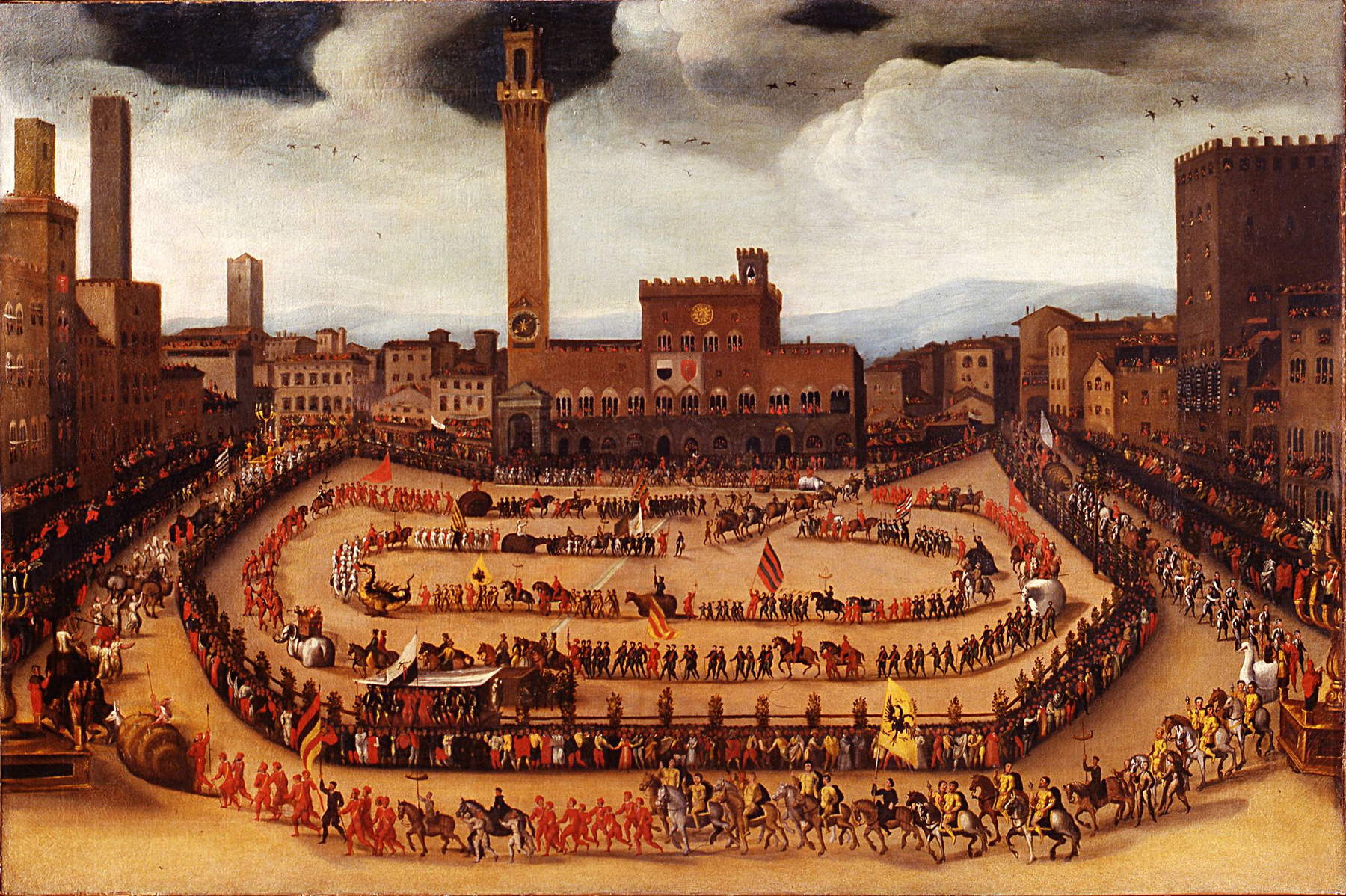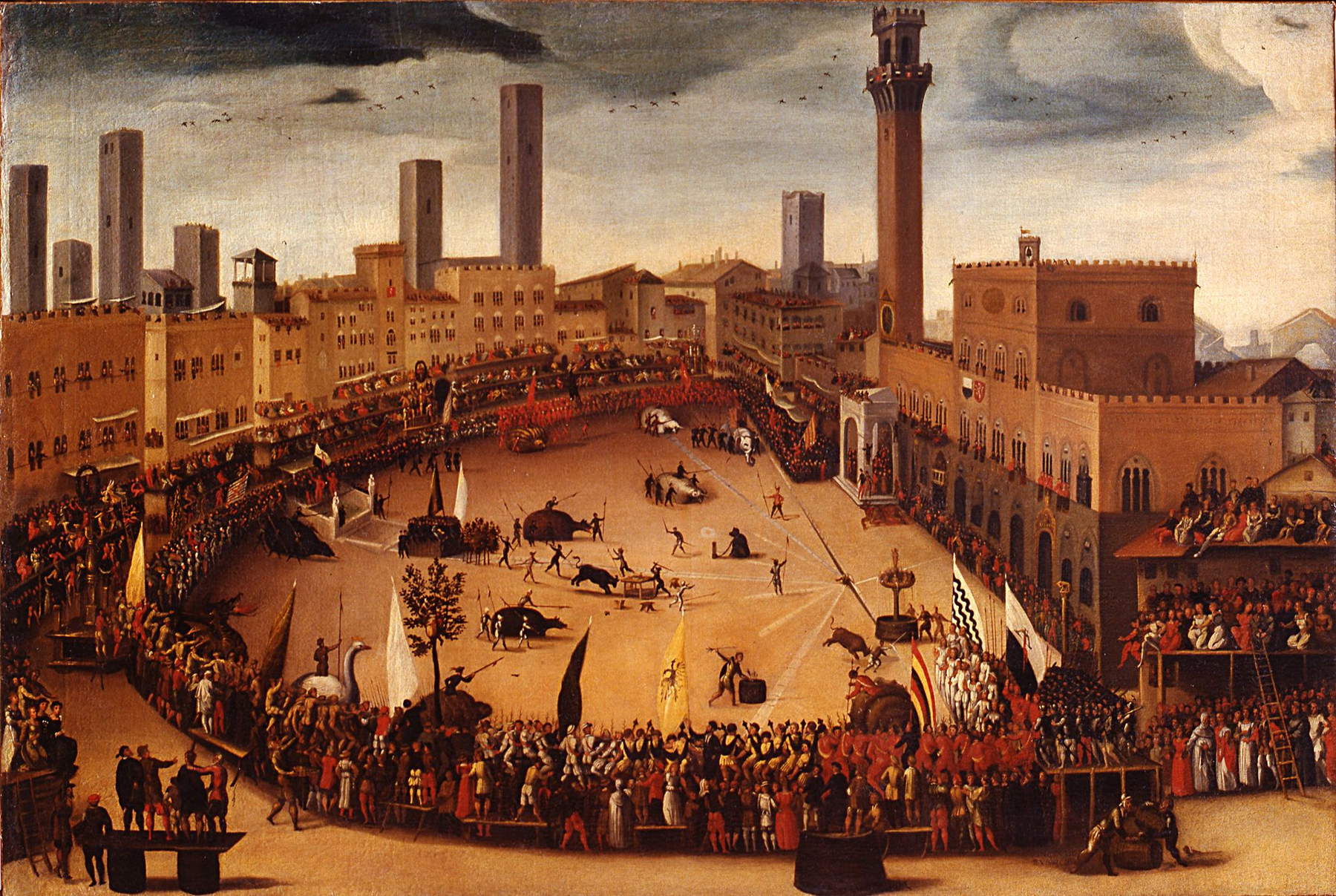Two works deeply connected to the city arrive in Siena from the Uffizi: these are two views of Piazza del Campo painted in 1585 by Vincenzo Rustici (Siena, 1556 - 1632), a Piazza del Campo with the parade of the contrade and Piazza del Campo with the bull hunt. They will be exhibited at the Santa Maria della Scala museum complex. The formula studied by the museum, the city and the Santa Maria della Scala Foundation will be that of a long-term deposit, allowing the Sienese museum to enhance the works owned by the Uffizi. In a logic, repeatedly enunciated by the Florentine museum, that aims to connote the Gallery as a diffuse pole of art and culture in the territory.
The understanding between the Uffizi and the City of Siena was struck yesterday by Siena Mayor Luigi De Mossi and Uffizi Director Eike Schmidt during a visit by the Florentine museum’s director to the city of the Palio. The two paintings had been in storage outside the Uffizi for several decades, in the custody of Banca Monte dei Paschi di Siena, ordinarily not visible to the public: now, with the transfer to Santa Maria della Scala, they can be admired by everyone every day.


Schmidt also visited the site of Ambrogio Lorenzetti’s masterpiece fresco, Allegory and the Effects of Good and Bad Government, in the Palazzo Pubblico. The important initiative of diagnostic reconnaissance of the work, recently undertaken, is making it possible to map its state of conservation and plan further interventions, and is proving to be a mine of valuable information for the experts who are part of the working group formed with the Superintendency. Director Schmidt was able to admire Lorenzetti’s extraordinary cycle up close in the elevated position of the scaffold.
“Two identity works, deeply linked to the soul of our city, from now on will be visible to anyone,” Mayor De Mossi commented on the transfer of Rustici’s paintings to Santa Maria della Scala. “We will finally enhance them in a public museum, in the very prestigious context of Santa Maria della Scala, which because of its history and characteristics is somewhat the great ’book’ of Siena’s history. This is an important concession and one that honors us, for which I thank Director Schmidt. It is a choice that strengthens us on the path we are taking to make the most of the extraordinary treasures of our territory.”
“The pair of 16th-century paintings by Vincenzo Rustici, depicting not only the heart of Siena but two splendid moments of the city’s characteristic costumes-the parade of the contrade and the bull hunt-will now be visible every day to the Sienese and outsiders alike,” Eike Schmidt emphasizes. “These masterpieces reaffirm how the Sienese can in reason feel proud not only of their extraordinary urban heritage, but especially of the centuries-old city traditions that find their most glorious living symbol in the Palio.”
Vincenzo Rustici was an Italian painter of the Sienese School, active between the 16th and 17th centuries. He was part of a family of painters: his father Lorenzo was called the Rustico and his son Francesco was called the Rustichino, and he was among the greatest painters of seventeenth-century Siena. He was a pupil and collaborator of Alessandro Casolani (whose brother-in-law he was: in 1582 his sister Aurelia married Casolani), and at his death he completed his Resurrection of Lazarus, later placed inside the Basilica of San Francesco in Siena.
 |
| Two important views of Piazza del Campo in the 1500s arrive in Siena from the Uffizi. |
Warning: the translation into English of the original Italian article was created using automatic tools. We undertake to review all articles, but we do not guarantee the total absence of inaccuracies in the translation due to the program. You can find the original by clicking on the ITA button. If you find any mistake,please contact us.